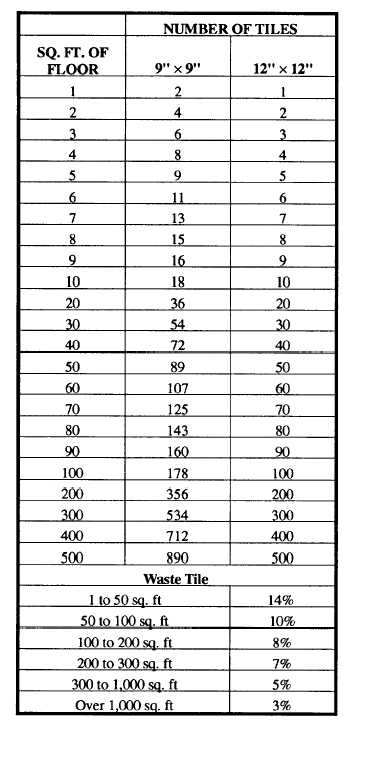Butt each tile squarely to the adjoining tile, with the
comers in line. Carefully lay each tile in place. Do not
slide the tile; this causes the adhesive to work up
between the joints and prevents a tight fit. Take
sufficient time to position each tile correctly. There is
usually no hurry since most adhesives can be “worked’
over a period of several hours.
To remove air bubbles, rubber, vinyl, and linoleum
are usually rolled after a section of the floor is laid. Be
sure to follow the manufacturer’s recommendations.
Asphalt tile does not need to be rolled.
After the main area is complete, set the border tile
as a separate operation. To lay out a border tile, place a
loose tile (the one that will be cut and used) over the last
tile in the outside row. Now, take another tile and place
it in position against the wall and mark a sharp pencil
line on the first tile (fig. 6-10).
Cut the tile along the marked line, using heavy-duty
shears or tin snips. Some types of tile require a special
cutter or they may be scribed and broken. Asphalt tile,
if heated, can be easily cut with snips.
Afler all sections of the floor have been completed,
install the cove along the wall and around fixtures. A
special adhesive is available for this operation. Cut the
proper lengths and make a trial fit. Apply the adhesive
to the cove base and press it into place.
Check the completed installation carefully. Remove
any spots of adhesive. Work carefully using cleaners and
procedures approved by the manufacturer.
SELF-ADHERING TILE.— Before installing
self-adhering tile, you must first ensure that the floors
are dry, smooth, and completely free of wax, grease, and
dirt. Generally, tiles can be laid over smooth-faced
resilient floors. Embossed floors, urethane floors, or
cushioned floors should be removed.
Self-adhering tile is installed in basically the same
way as previously mentioned types of tile. Remove the
paper from the back of the tile, place the tile in position
on the floor, and press it down.
Table 6-2.—Estimating Floor Tile
Estimating Floor Tile Materials
to find the number of tiles needed, then add the waste
Use table 6-1 when estimating resilient floor tile
materials. This table gives you approximate square feet
coverage per gallon of different types of primer and
adhesives. Be sure to read and follow the manufacturer’s
directions. Table 6-2 provides figures for estimating the
two sizes of tile most commonly used. After calculating
the square feet of the area to be tiled, refer to the table
factor.
To find the number of tiles required for an area not
shown in this table, such as the number of 9- by 9-inch
tiles required for an area of 550 square feet, add the
number of tiles needed for 50 square feet to the number
of tile needed for 500 square feet. The result will be 979
6-7

